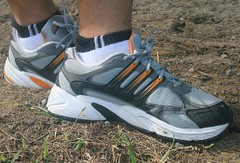Remember the typical plant and animals cells in the previous post? You may think that all the cells in your body and the cells in a plant are all alike. Well, that is not the case. A large organism like yourself may contain many millions of cells which are totally different structurally and functionally. Almost all of these cells can perform the activities which are characteristics of living things, but many of them specialise in doing some of these better than other cells do. Lets see how cells are specialise to form tissues, organs and organ systems.
TISSUE
TISSUE
- A tissue is a group of specialised cells having the same structures, which perform a particular function.
- Example 1: The layer of cells lining your stomach. The function of this tissue is to make digestive enzymes which helps digestion of protein in the stomach.
- Example 2: The palisade mesophyll layer of the leaf consists of palisade cells. This layer of cells (tissue) contains chloroplasts in high concentration. Because of this, more photosynthesis occurs in this layer.
ORGAN
- An organ is a group of tissues working together to perform a particular function (although each of these tissues have their own function to do).
- Examples: Stomach, Heart, Kidney, Lung, Leaf and Flower
- Consider a leaf: A leaf consists of the epidermal layers (note: the stomata are found in the lower epidermal layer), palisade mesophyll layer, spongy mesophyll layer and the vascular tissues. Each of these tissues has its own function but they work together to make food in photosynthesis.
ORGAN SYSTEM
- An organ system is a group of organs working together to perform a particular function.
- The stomach is only one of the organs which help in the digestion of food. The mouth, the intestines and the stomach are all part of the digestive system.
- The heart and the blood vessels are parts of the circulatory system.
SUMMARY:
ORGANELLES --> CELLS --> TISSUES --> ORGANS --> ORGAN SYSTEM --> ORGANISM



